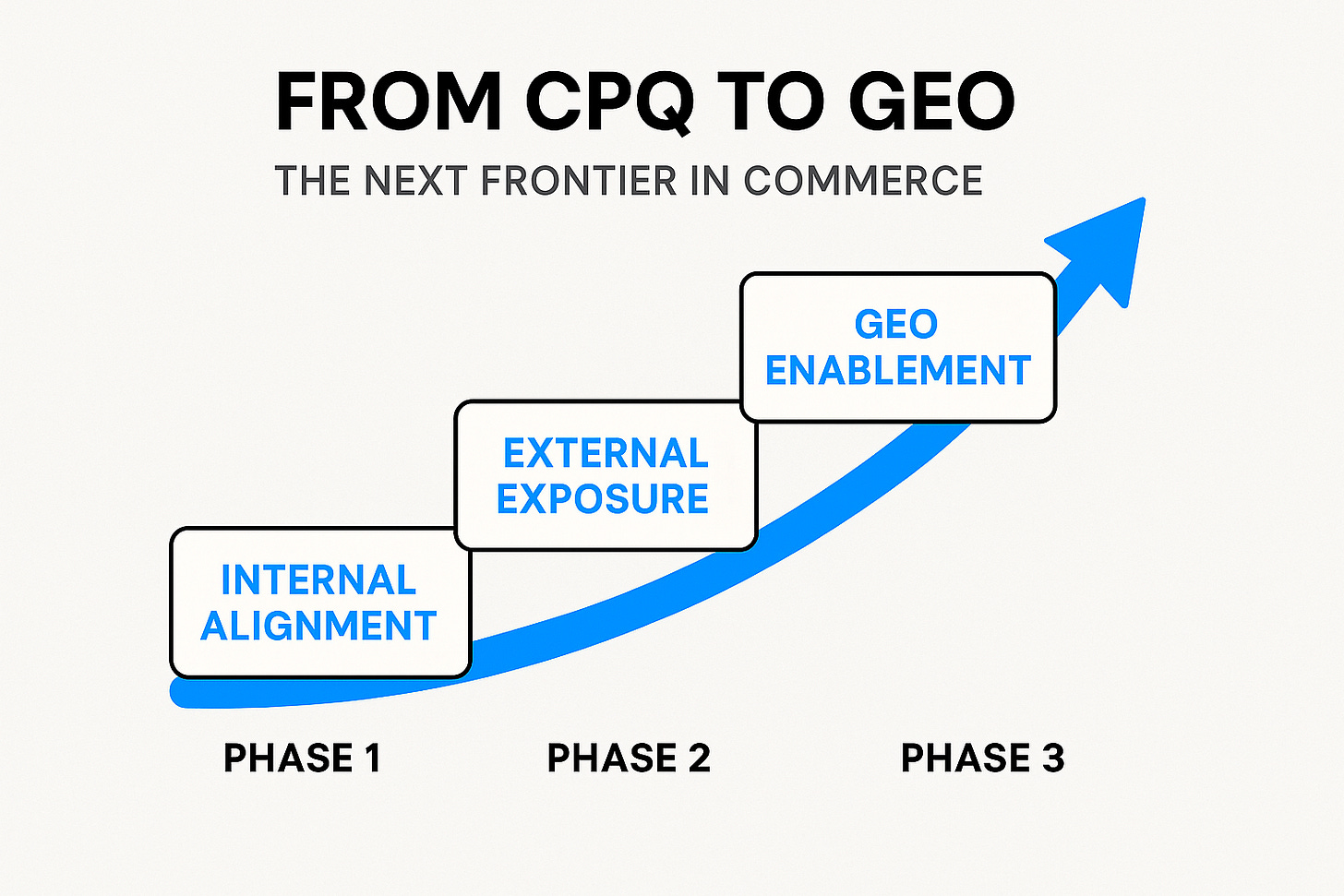From CPQ to GEO: Why Quote-to-Cash Projects Should Plan for the AI Future
When most companies think about implementing CPQ, their focus is inward. The goal is to fix quoting complexity, clean up product data, and give sales teams a reliable way to configure, price, and quote. That’s the right starting point. But it’s not the finish line.
The reality is that CPQ projects sit at the intersection of a much bigger shift in commerce. Generative AI is beginning to move into the buying process, and “Generative Engine Optimization” (GEO) is emerging as the next evolution of SEO. Instead of ranking in search results, businesses will need to ensure their products are agent-ready so AI can understand, recommend, and even transact on their behalf.
CPQ as the Foundation
The beauty of CPQ is that it forces a company to structure its product, pricing, and configuration rules in a way that can be trusted. That same structure is exactly what AI agents need in order to represent your products accurately.
If your CPQ only lives inside the walls of your business, it will help sales teams quote faster. If it’s built with an eye toward externalization, it becomes the foundation for customers, distributors, and ultimately AI agents to configure and buy from you.
A Natural Maturity Curve
This isn’t about doing everything at once. It’s about recognizing the path forward.
Phase 1 – Internal alignment
Get CPQ right for your sales team. Standardize pricing, simplify configuration, and eliminate quoting chaos.
Phase 2 – External exposure
Open the door to portals, guided selling, and distributor enablement. Let customers experience the same logic and rules your internal teams use.
Phase 3 – GEO enablement
Once CPQ is stable, make it AI-ready. Package your data into agent-friendly formats, expose APIs for inventory and pricing, and ensure your products can be discovered and recommended in generative engines.
How this fits in: Buy it in ChatGPT: Instant Checkout and the Agentic Commerce Protocol
When you view CPQ as the first step in a long-tail strategy, you avoid rework later. You also set yourself up to win in a future where AI-driven commerce becomes the norm.
Where GEO Meets Quote-to-Cash
The link between GEO and Q2C is direct:
Configure: AI agents can guide customers to the right product by asking natural questions, but CPQ rules ensure accuracy.
Price: CPQ keeps pricing logic and discount rules intact so AI doesn’t “guess” wrong.
Quote: AI can generate proposals in seconds, with CPQ ensuring terms and approvals are consistent.
Contract to Cash: Once generated, the transaction flows into downstream order, contract, and billing systems without friction.
CPQ keeps the business in control. GEO makes the business discoverable in the new AI-powered buying journey. Together, they form the next evolution of Quote-to-Cash.
Why This Matters Now
Companies exploring CPQ today have a rare opportunity. They can either treat it as an internal efficiency project, or they can design it as a bridge to a future where AI agents shape buying decisions.
The winners will be those who think long term. They’ll clean up their product data, enable portals and self-service, and then position themselves for GEO so their products don’t disappear when buyers start asking AI agents instead of search engines.
Removing Friction
Quote-to-Cash has always been about removing friction from selling. Now it’s about removing friction from buying. CPQ is the starting point. GEO is the long tail. If you connect the two, you’re not just solving today’s quoting problem. You’re ensuring your business remains relevant in the next era of commerce.


